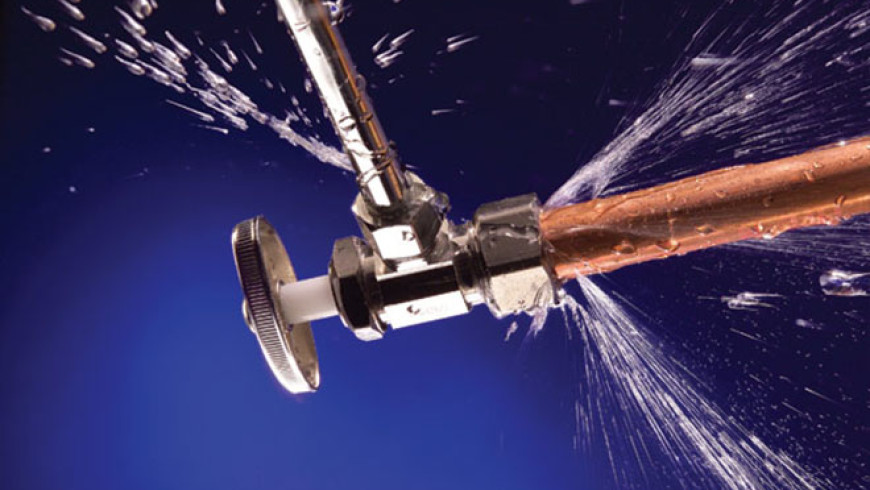Identify Six of Principal Leak Triggers Inside The House
Identify Six of Principal Leak Triggers Inside The House
Blog Article
Every person maintains their own thinking in relation to Top Causes of Home Water Leaks.

Leakages not just create waste of water yet can also cause unnecessary damages to your home as well as promote undesirable natural growth. Sadly, water leaks might go undetected considering that a lot of the pipework in our home is hidden. By recognizing as well as looking for daily situations that create leaks, you can shield your house from future leakages as well as unnecessary damage. Today, we will consider six leak triggers that might be causing your pipes to leak.
Encroaching roots
Most water leaks begin outside your home as opposed to inside it. If you see an abrupt decrease in water stress, say in your tap, take time to head out as well as examine your backyard. You may discover damp spots or sinkholes in your yard, which may mean that tree origins are invading water lines creating water to leak out. You can have your plumber check for invasion, especially if you have trees or bushes near your building.
Rusty water supply
As time goes by, your plumbing system ages and deterioration such as corrosion might start eating away the pipes. This could be the source of discoloration or warping on your water pipes. This asks for an inspection with your plumber instantly. If our plumbing system is old, consider replacing the pipes because they are at a greater danger of rust than the more recent versions.
Faulty Pipeline Joints
The point at which your pipelines attach is frequently the weakest link in the waterline. Pipeline joints can wear away in time, leading to water leakages. The majority of pipe joints are not quickly noticeable. If you have loud pipelines that make ticking or banging sounds, especially when the warm water is switched on, your pipeline joints are probably under a great deal of pressure. It is a good idea to have your plumber inspect your system yearly.
Instantaneous temperature changes.
Extreme temperature modifications in our pipes can trigger them to broaden and also acquire all of a sudden. This development and also tightening may trigger splits in the pipelines, especially if the temperature are listed below freezing.
Poor Water Connectors
At times, a leak can be caused by loose hoses and pipes that provide your devices. In instance of a water links leak, you may notice water running straight from the supply line or pools around your home appliances.
Clogged Drains
Obstructed drains could be annoying as well as inconveniencing, but they can sometimes end up triggering an overflow resulting in burst pipes. Keep removing any materials that may decrease your drains that might obstruct them to avoid such troubles.
All the above are root causes of leaks however not all water leaks result from plumbing leakages; some leaks might come from roof covering leaks. All leakages need to be repaired quickly to prevent water damages.
Leaks not just create waste of water however can likewise cause unnecessary damage to your residence as well as advertise undesirable organic growth. By recognizing and also looking for everyday situations that create leakages, you can shield your home from future leakages and also unnecessary damages. Today, we will look at 6 leakage causes that may be triggering your pipelines to drip.
At times, a leakage can be triggered by loosened tubes and also pipelines that supply your appliances. In instance of a water connections leakage, you may discover water running straight from the supply line or pools around your appliances.
How To Check For Water Leak In Your Home
How To Check for Leaks
The average household's leaks can account for nearly 10,000 gallons of water wasted every year and ten percent of homes have leaks that waste 90 gallons or more per day. Common types of leaks found in the home are worn toilet flappers, dripping faucets, and other leaking valves. These types of leaks are often easy to fix, requiring only a few tools and hardware that can pay for themselves in water savings. Fixing easily corrected household water leaks can save homeowners about 10 percent on their water bills.
To check for leaks in your home, you first need to determine whether you're wasting water and then identify the source of the leak. Here are some tips for finding leaks:
Take a look at your water usage during a colder month, such as January or February. If a family of four exceeds 12,000 gallons per month, there are serious leaks.
Check your water meter before and after a two-hour period when no water is being used. If the meter changes at all, you probably have a leak.
Identify toilet leaks by placing a drop of food coloring in the toilet tank. If any color shows up in the bowl after 10 minutes, you have a leak. (Be sure to flush immediately after the experiment to avoid staining the tank.)
Examine faucet gaskets and pipe fittings for any water on the outside of the pipe to check for surface leaks.
Undetected water leaks can happen without the home or business owner even realizing. If you suspect a water leak, but not able to find the source. It is time to contact a professional water leak detection service, The Leak Doctor.
How To Find a Water Leak In Your Home
https://www.leakdoctor.com/blog/How-To-Check-For-Water-Leak-In-Your-Home_AE197.html

I have been very fascinated with How to Find Water Leaks and I am praying you enjoyed the new post. If you please set aside a second to share this page if you enjoyed reading it. I take joy in reading our article about Common Water Leaks In House.
Toilet overflow? Dial! Report this page